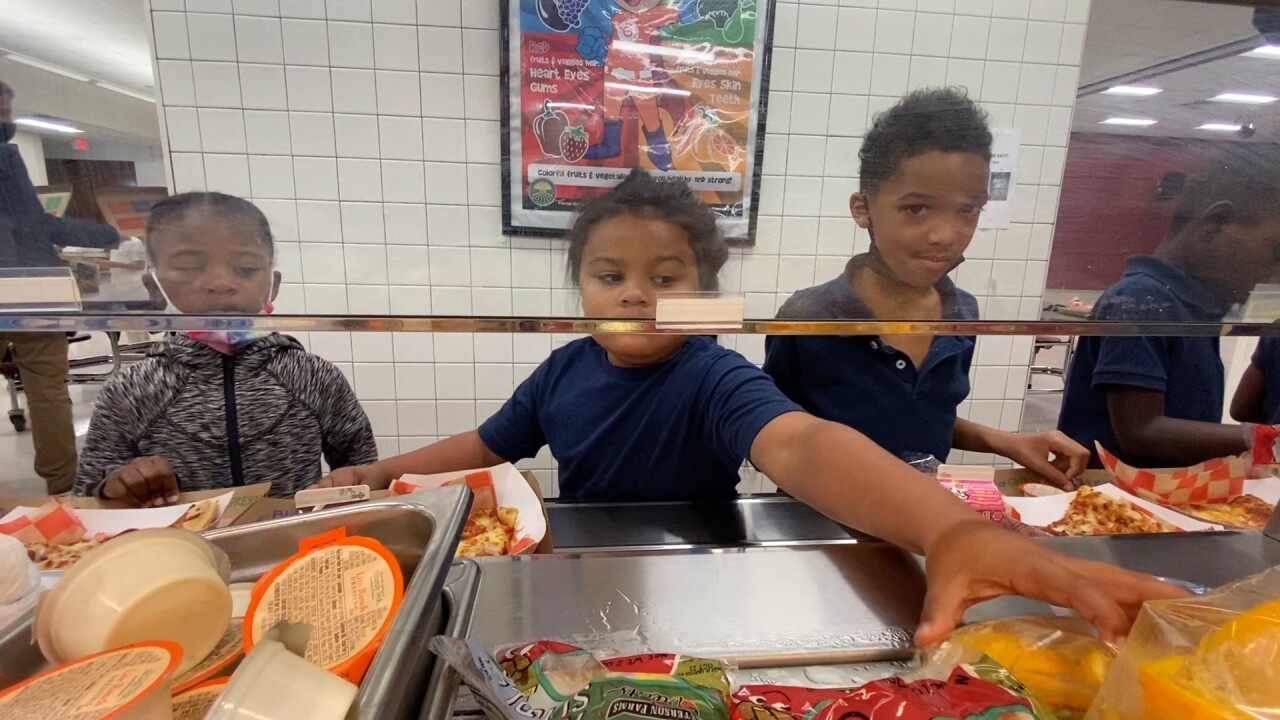TAMPA, Fla. — Inside school lunchrooms, meals are healthy and tasty, but it’s often not what was on the menu for that day and some options are served in plastic to-go containers cut in half to make a bowls. This is a direct result of the supply chain back up across the country.
“We started seeing substitutions early September, so just after school had started,” said Lynn Geist the food services director for Pinellas County Public Schools.
ABC Action News confirmed the substitutions are happening in at least Pinellas, Polk, Pasco and Hillsborough counties.
“We are seeing everything shortaged,” said Shani Hall, the general manager of school nutrition for Hillsborough County Public Schools. “Shortages in meat, in grains and breads, in-canned fruit, we're getting produce just fine canned fruit, vegetables, milk we're fine because we have a local dairy. But basically we're seeing shortages all across the board, and paper products. So anything that could be served in dishes and trays and boats.”

These items and materials are all likely sitting on cargo ships off the coast of California or in facilities with no truck drivers to deliver them.
Imperial Dade is a top food packaging distributor across in the U.S. that supplies many local schools.
A spokesperson for the company told ABC Action News in a statement: “Our sourcing specialists are working diligently to find alternatives to the items that manufacturers cannot deliver. We have two amazing team members in Tampa, Vickie and Lisa, that have that have recently sourced substitute products specifically for the Pinellas County School District cafeterias until their regular products become available from the manufacturers.”
Last week, the kid-friendly sporks didn’t come in, so instead, Imperial Dade sent Pinellas schools full utensil packets with real forks.
“All of our paper and plastic comes from China, so that's why we are seeing shortages left and right,” Geist said.

While packaging substitutions are often less eco-friendly, they’re not costing schools more. It’s the price hikes on food across the board that districts are having to balance within budget.
“We are just watching very closely all of our other expenses that we do have control of and trying to be very cautious with other expenditures, other supplies and things so we can devote more cost more of our money to the food,” Hall explained.
Unfortunately, it’s the kids favorite food item that’s been really hard to get-- the peanut butter jelly Uncrustable.
Solutions include schools trying to make their own PB&J sandwiches or bringing back the re-usable plastic trays, but that takes time and staff-- which is also experiencing a major shortage.
Both Hillsborough and Pinellas districts are short about 200 kitchen staff each.
“Which is one or two people per kitchen and that's a lot. We usually start off maybe around 50/75,” Geist explained.
“The ones that are coming to work to our kitchens are working so hard,” Hall added, “And we have some kitchens that are working with two people, three people serving, you know, 400, 500 kids.”
Now, they’re pleading for more parents to help during lunchtime.

But how long will these supply chain disruptions last?
Experts say it could take up a year or longer to get things really moving again.
“This isn't a problem that's going to fix itself in the next 2, 3, 4 months, this is a 12 to 18 month challenge we have with regards to supplying the actual product and the cost of maintaining the supply to make sure it's low enough so I think retailers need to be agile,” Brett Rose, CEO of United National Consumer Suppliers said. “This is not a US problem, our countries and our, our company is in 34 countries. We have, you know Chinese retailers asking us to ship goods back to China.”
Schools say they are getting as creative as they can, working with as many local products as possible.




